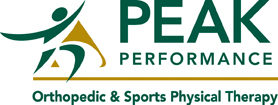 What is frozen shoulder?
What is frozen shoulder?
What is adhesive capsulitis?
What causes adhesive capsulitis?
Frozen shoulder (also referred to as adhesive capsulitis) is a condition characterized by stiffness, pain, and limited range of motion in the shoulder joint. It occurs most often in postmenopausal women, after surgery or an injury, and in people 40-70 years of age. There are two classifications of adhesive capsulitis, primary or secondary. Primary adhesive capsulitis occurs when there is no significant cause for the pain or stiffness. Secondary adhesive capsulitis follows as a result of an injury. It is not known what causes this condition, but it is thought to be a tightening or inflammation of the joint capsule that surrounds the shoulder joint. Due to this tightening, adhesions are formed, limiting the range of motion and function in the patient.
Frozen shoulder typically has a gradual onset, and progresses through three phases. The first phase is referred to as the freezing (or painful) stage. This phase is characterized by a gradual onset of aching in the shoulder that is often widespread, and can be worse at night, making it difficult to lie on the shoulder. The range of motion begins to become limited in the shoulder. This phase can last 2-9 months. The second phase is referred to as the frozen (or stiffening) stage. It is characterized by continued stiffening of the shoulder joint, reduction of pain, continued decrease in range of motion, and difficulty with daily tasks such as dressing. The patient may also notice decreased strength and muscle wasting. This phase can last 4-12 months. The third phase is referred to as the thawing stage. It is characterized by continued reduction in pain as well as increased range of motion and function of the shoulder.
Treatment of this condition often times includes over the counter medication such as ibuprofen for inflammation reduction. Your physician may prescribe anti-inflammatories, pain killers, or steroids to help as well. Physical therapy will focus on range of motion restoration, pain reduction, strength training, and returning the patient to their prior level of function. Majority of individuals respond well to physical therapy and resume normal pain-free activities. Anesthetic manipulation or surgery is a last resort.
H. Tipsord
